Medieval graffiti in Hertfordshire churches
- Michael Smith
- Mar 14
- 5 min read

One of the delights of visiting older churches in Hertfordshire is the profusion of medieval graffiti to be found on their columns and walls. The original architects’ use of soft limestone clunch in the construction of the churches has played a significant part in ensuring that even the smallest inscriptions have been able to survive.
Out of sight, but not out of mind...
Medieval graffiti in Hertfordshire churches give the modern visitor a unique insight into the lives of people in villages and towns over six centuries ago. Often inscribed on pillars outside the view of the pulpit, the graffiti take various forms including heads, animals, heraldic devices, prayers and poetry.
Hertfordshire contains some fascinating examples; in the selection below I reveal a range of graffiti. As Violet Pritchard observed nearly six decades ago, what survives today is only a fraction of what was perhaps present; a number of other elements need to be taken into consideration:
Medieval graffiti at St James's Church, Stanstead Abbotts
Medieval graffiti at St James's church is limited to the font pedestal; not only are there numerous examples but also one figure suggests that the pedestal came from another part of the church and has been repurposed.
At St James, Stanstead Abbotts, for example, a figure on the fifteenth century font pedestal stands upside down; the font itself dates to the thirteenth century showing that the graffiti was originally cut elsewhere when the pedestal was the "right way up".
Other graffiti on the font seem to hint at events in society long ago. One images shows what looks like the face of a devil, or perhaps a person in a devil mask; another reveals an old woman (?) with a cross in the distance is particularly fascinating. Who was she?
Famous medieval graffiti at Ashwell, Hertfordshire

St Mary's church at Ashwell contains some remarkable medieval graffiti. As well as a depiction of what has been suggested to be a pre-Great Fire St Paul's cathedral, perhaps what is most astonishing are the words seemingly cut out of the stone walls with a chisel.
The scribe wrote two passages, which I take from Violet Pritchard's work:
Primula pestis in M ter ccc fuit L minus uno
(The beginning of the plague was in 1350 minus one) (i.e. 1349)
and
XLIX
pestilencia I quinque
M C ter x penta miseranda ferox uiolenta
MCCCL
superest plebs pessima testis in fine ij
uentus ualidus
MCCC
oc anno maurus in orbe tonat LXI
('49 / pestilence that is five / 1350 wretched, fierce, violent / 1350 / the dregs of the populace live to tell the tale, at the end of the second [pestilence] a mighty wind / this year Maurus thunders in the heavens 1361)
The desperate scribe relates how the Black Death arrived in 1349 and decimated the population in under a year. A second plague is also recorded in 1361. The scribe here may also be alluding to a great storm which took place on St Maurus day (15th January) the following year (1362), when the spire at Norwich cathedral was blown down.
Other medieval graffiti at Ashwell includes a depiction of a face, possibly an angel with wings; two beasts carved into a pillar; and an image of what may be two figures in graves (or may possibly be a representation of a window). Above this image is an intricately cut prayer, "our laDi help" - which cries out hauntingly from days long ago.
Medieval graffiti at Anstey
I have written elsewhere about this magnificent church, but no piece on medieval graffiti in Hertfordshire churches would be complete without reference to Anstey's famous medieval ceremonial crested helmets.
One features a helmet bearing the crest of the ragged staff, reflected additionally on a shield adjacent to it; other, smaller shields are depicted. A second helmet bears the crest of a horse's head with a bridle. It is quite likely that the person who carved these knew their owners well or that, at one time, these arms existed in the church as funeral achievements.
The huge motte next to the church suggests people, of status lived at Anstey during this period; the existence of a road called Cheapside hints at regular markets or fairs. The depiction of a four wheeled cart and another shield hint at armies travelling to war.
Other medieval graffiti in Hertfordshire churches
In this section I make note of some medieval graffiti is other churches I have visited which are of interest.
At Benington, near the church's magnificent effigies is what may be a circular maze cut into the wall. At St Vincent's church, Newnham, on the Hertfordshire/Bedfordshire borders, a person with spiky hair and raised arms greets the viewer while, in the porch, two crosses on hills are decorated with strange motifs. At Little Chishill, just inside Cambridgeshire, the exterior walls show numerous crosses cut into the stone, as well as what may be an early sundial.
Medieval graffiti - a peep into the past

Medieval graffiti offers a unique and intimate journey of discovery for anyone interested in the social life of our forebears long ago. While precise dating is difficult (unless, as at Ashwell, the scribe tells us), the majority can only be ascribed to a broad period (1300-1600). Handwriting styles can assist in a vague dating although text written in English points mainly to dates from around 1400 onwards.
A number of motifs are common across different churches (e.g. daisywheels and carved ‘W’s). Writing may be in Latin, French or Middle English although often the text is unclear or carries abbreviations which are difficult to decipher.

It is likely that what survives today was originally inscribed into painted surfaces; the graffiti would therefore have been much more prominent originally (e.g. a red-painted pillar would have shown the graffiti in white when cut into chalk).
Pritchard describes the graffiti as “lost treasures re-found, only to be lost again if steps are not taken to preserve them”. But many are so faint that the greater pleasure perhaps is to know that they are there, to enjoy them if you wish, and then to walk away enriched.
I will leave to another time the graffiti at St Alban's cathedral and the rich survivals at Stevenage, both of which are worthy of greater discussion than I can provide here.
About the author, Michael Smith

Michael Smith is a British translator and illustrator of medieval literature; he is also an accomplished printmaker, whose work is in private collections worldwide.
His books, including a translation of Sir Gawain and the Green Knight and the Alliterative Morte Arthure, are available through all the usual outlets. His translation of The Romance of William and the Werewolf was published in 2024. All Michael's books feature his linocut prints as their illustrations.
For more details of Michael's books and how to purchase signed copies, click here.






















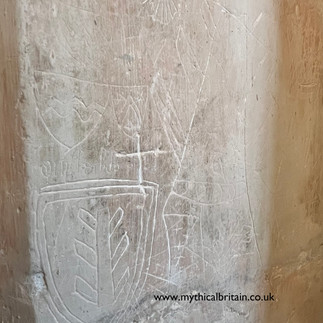



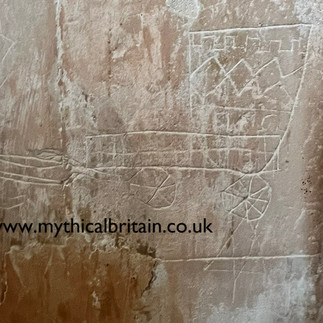

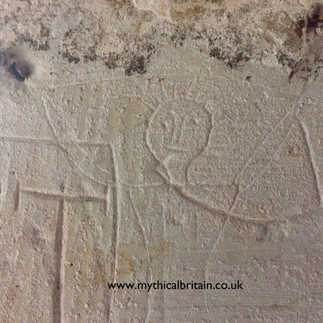





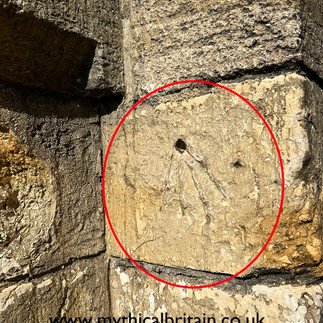
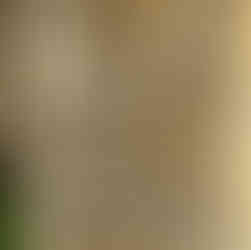

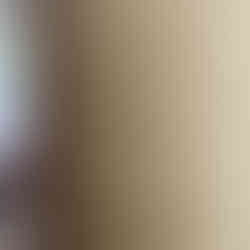




Comments